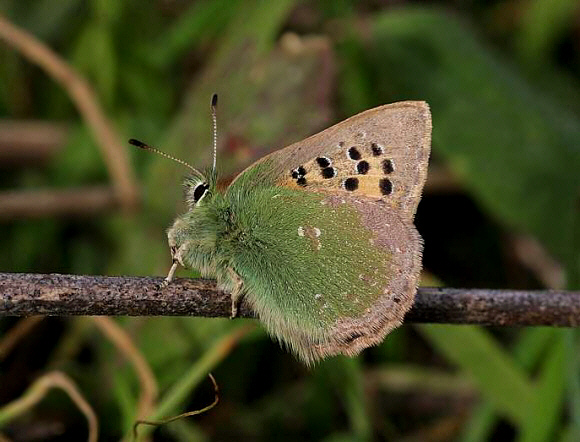 Tomares ballus, Dudar, Granada, Andalucia, Spain – Peter Bruce-Jones
Tomares ballus, Dudar, Granada, Andalucia, Spain – Peter Bruce-Jones
Introduction
The genus Tomares comprises of 8 species – telemachus, fedschenkoi, callimachus, mauretanicus, desinens, nogelli, ballus and romanovi. Only 2 species are found in Europe – ballus and nogelli, with the ranges of the other species not quite reaching the European boundary.
Males of all species are dark brown above, but the females have large patches of metallic orange on both wings. the underside hindwings vary considerably according to species – e.g. mauretanicus is mottled in shades of grey and brown, ballus is plain green, and nogelli is grey with a linear series of orange and black spots.
Tomares ballus is found in Portugal, Spain and the Mediterranean coast of France. It also occurs in Morocco, Algeria, Tunisia, Libya and Egypt.
Habitats
This species inhabits open dry flowery habitats where the sward is short and fairly sparse. It can be found at elevations between sea level and about 1700m.
Lifecycle
The egg is laid singly on leaf buds of the foodplants. These vary according to locality and include Lotus, Medicago, Dorycnium and Anthyllis ( Fabaceae ). The larvae are attended by Plagiolepis ants and probably pupate within the ant nests although this is not confirmed.
Adult behaviour
Tolman records that at high elevations after severe overnight frosts very torpid adults have been found lying with closed wings on rocks. As the rocks are warmed by the morning sun the butterflies slowly regain the use of their legs and raise themselves, adjusting their position regularly so that the under surface of their wings remain perpendicular to the sun’s rays.
